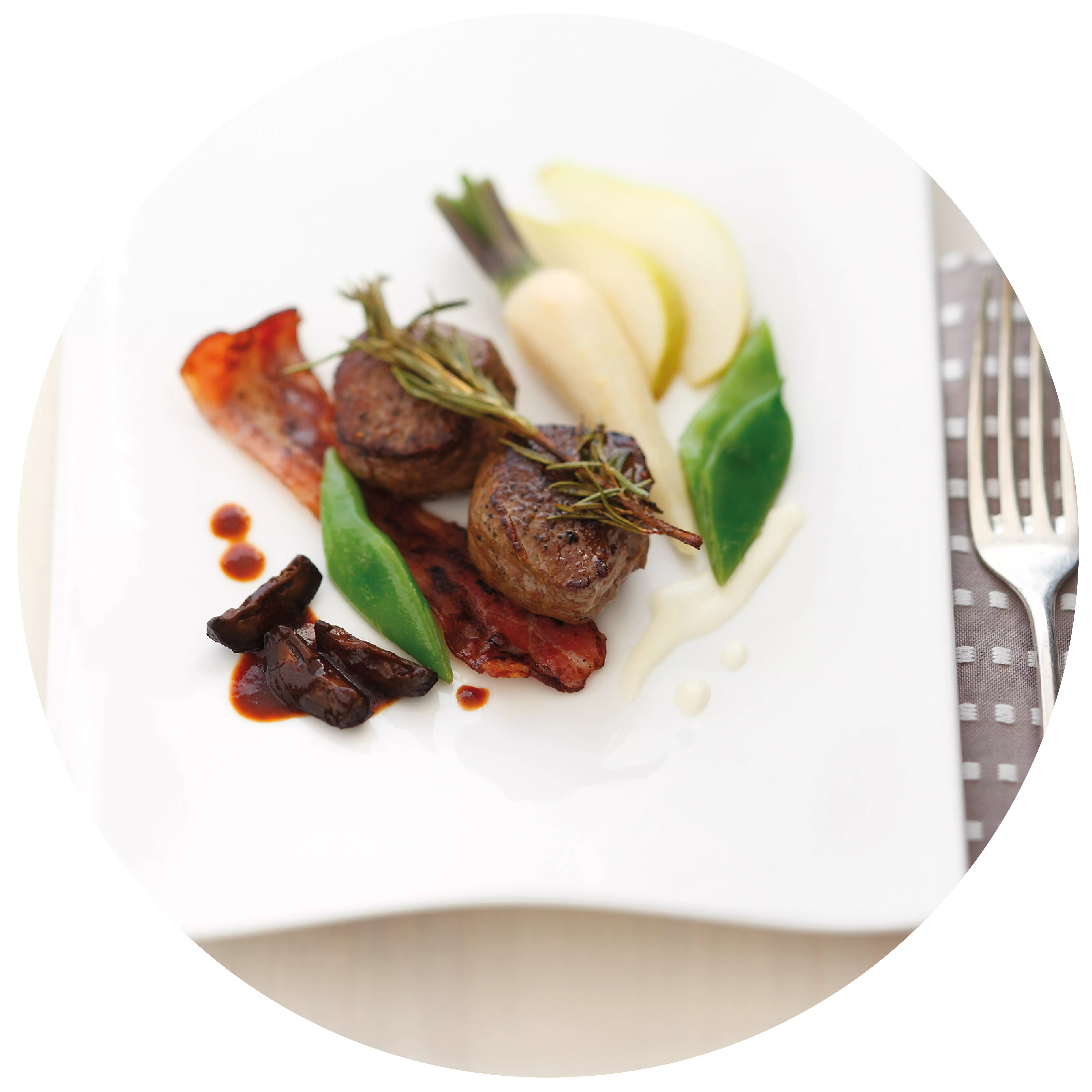Spätburgunder / Pinot Noir

In Germany, the Spätburgunder (Pinot Noir) is to red wine what the Riesling is to white wine: the cream of the crop.
Facts
-
11.519 ha
Vineyard area 2023
-
11 Prozent
Planted vineyard area in Germany
-
64 Prozent
Pinot Noir vineyards in the Ahr wine region
Cultivation and significance
Demanding in terms of soil, climate and weather conditions, Pinot Noir is the number one red grape variety in Germany.
In Germany, around 11,519 hectares (2023) of vineyards are planted with the Pinot Noir variety, which corresponds to around 11 per cent of the total vineyard area. Winegrowers and consumers are increasingly favouring the variety. Since the beginning of the 1990s, the area planted with Pinot Noir has grown by more than 5,000 hectares. Most of the vines of this variety are in Baden (5,029 hectares) - with a focus on the Kaiserstuhl. The Palatinate (1,739 ha), Rheinhessen (1,504 ha), Württemberg (1,302 ha), the Rheingau (403 ha) and the Ahr (342 ha) are also important areas for growing Pinot Noir.
Vinification and flavour
Pinot Noir wines taste full-bodied and velvety, with a fruity flavour and hints of almond. The typical Pinot Noir has a slightly sweetish aroma of red fruit, from strawberry to cherry and blackberry to blackcurrant. Barrique wines also have hints of vanilla and cinnamon. A distinction is made between the classic and the modern type. Traditionally, the best Pinot Noirs were made from very ripe grapes, were not very colourful, mild, low in tannins and reddish-red in colour. In addition to this classic type, the modern Pinot Noir with a strong red colour, more tannin, less acidity and often a short ageing period in small oak barrels is becoming increasingly important.
Pinot Noir red wines are ideal for the cooler months of the year. They are drunk chilled to 16 to 18 degrees. Full-bodied varieties are best served with roasts, game or a cheese platter. Weißherbst goes well with starters and white meat, and in Auslese quality also as an aperitif.
History
The Pinot Noir grape variety belongs to the Burgundy family. It is probably one of the earliest varieties to be selected from the wild vines in western Central Europe. Charles the Fat brought the variety to Lake Constance in 884. It was planted in the Rheingau in the 13th century. In the 16th century, it was probably also planted in the Palatinate. In the 18th century, the variety is said to have travelled from Burgundy to the Ahr. The variety experienced a boom 150 years ago with the expansion of sparkling wine production, for which pure Burgundy vineyards were planted. The terms "Pinot Noir" and, in parts of Baden, "Klevner" are used as synonyms.
At a glance
- Most important red wine variety in Germany
- High demands on location and climate
- Aroma: blackberries, cherries, strawberries, elderberries, pepper
- Flavour: classic vinification: mild, low in tannins. Modern vinification: full-bodied and rich in tannins
What is the traditional style of German Pinot Noir?
The traditional style of German Pinot Noir (Spätburgunder) is lighter in colour, body and tannic acidity than its counterparts from warmer climates.
with pears, beans, parsley root and black walnuts Venison medallions
with pears, beans, parsley root and black walnuts
- 12 Stück Rehmedaillions (a 80g)
- 30 Gramm gebratene Speckstreifen
- 200 ml Bechamelsauce
- 3 EL Sonnenblumenöl
- 8 kleine Petersilienwurzeln mit Grün (alternativ Knollensellerie)
- 6 - 8 breite Schnippelbohnen
- 1 große Birne
- 4 - 6 schwarze Walnüsse
- 100 ml Wildfond
- 2 EL Butter
- 2 Stängel glatte Petersilie
- nach Geschmack Salz
Preheat the oven to 180 °C top and bottom heat. Clean, peel and trim the parsley roots. Clean the beans and cut into diagonal pieces. Blanch the parsley roots and beans separately in boiling salted water and rinse immediately in iced water.
Cut the walnuts into eighths and warm in the game stock. Wash the unpeeled pear, cut into eighths, remove the core and cut into thin slices. Fry the venison medallions on both sides in oil, then finish cooking in the oven for approx. 3 - 5 minutes.
In the meantime, toss the beans and parsley roots in melted butter and season with salt. Arrange the vegetables with the black walnuts and pear slices on large plates. Place the medallions on top, garnish with game stock, Béchamel sauce and bacon strips.
Tip: You can make your own black walnuts. To do this, prick the walnuts all over with a fork or skewer and place in water for 10 days. Change the water every day so that the tannic acid can drain off. Boil the nuts 3 times in salted water until they are deep black. Simmer with bay leaves and peppercorns for approx. 20 minutes until soft. Layer in preserving jars and cover with syrup. The nuts can be kept for approx. 1 year.
- Spätburgunder / Pinot Noir (trocken)
- Pinot Gris (trocken)





